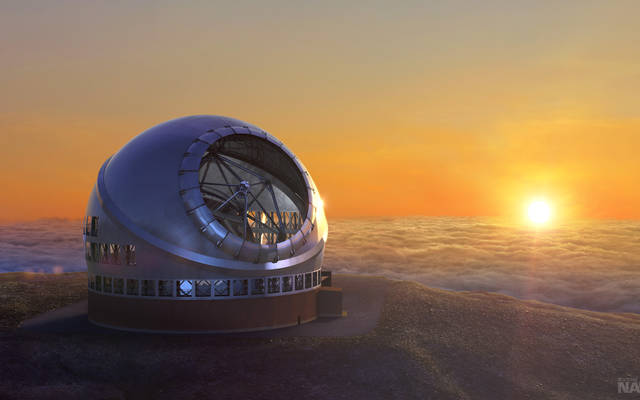There’s no disputing that Mauna Kea is special. At nearly 14,000 feet above sea level, the area near the summit is a place where the heavens meet the Earth — the highest point in Hawaii. For many Native Hawaiians, the dormant volcano is an important place to connect with natural and spiritual worlds. For astronomers, it’s where the atmosphere is especially clean and therefore the stars in the night sky are exceptionally bright.
Both perspectives are grounded in reverence for the summit. And that’s why we should be optimistic that they can coexist — even thrive symbiotically — with the development of the Thirty Meter Telescope (TMT), which is slated to become the most advanced and largest optical telescope on our planet.
Hawaii’s Board of Land and Natural Resources on Thursday granted a construction permit for the $1.4 billion project, but it remains unclear when construction could begin. Groups opposed say they’ll take their case to the Hawaii Supreme Court, and that court is now weighing a separate challenge to the project’s sublease.
What is clear is that the process must be respected: Opponents have the right to protest, but they don’t have the the right to block legal access or stage disruption at the telescope site. If the project moves forward, Gov. David Ige’s leadership will be key to ensuring protection of everyone’s rights while keeping the peace.
Initially, the TMT project secured a permit to build on conservation land in 2011. Subsequently, protesters thwarted attempts to start construction, and in 2015 the state Supreme Court invalidated the permit and ordered a re-do — due to the land board’s sloppy handling of the review process.
In July, former Circuit Judge Riki May Amano released a 305-page decision in which she found meritless, based on state law, assertions that the telescope activity represents desecration. Dismissing the 305-page decision as biased, opponents are pledging to keep fighting until astronomers opt to build the TMT elsewhere.
But this second, all-inclusive review, with 23 petitioners involved in contested case proceedings, has resulted in a commendable effort to strike a fair and thoughtful balance between Native Hawaiian traditional and cultural practices and those of other legitimate stakeholders.
Figuring prominently among 43 conditions the board is tying to construction are efforts aimed at addressing the University of Hawaii’s past shortcomings in environmental stewardship of the sensitive site. However, the review credits UH, which holds the lease on the 13-telescope science reserve, with making a good-faith effort to correct course. The permit requires decommissioning of three existing telescopes, restricting any future development to existing sites and to make the TMT the last new observatory on Mauna Kea.
Further, there would be mandated protection-focused cultural and natural resources training for employees, and a rule that jobs be filled locally “to the greatest extent possible.” In addition to economic opportunities, education for Hawaii island youth is appropriately folded in. Even while the construction permit was invalid, telescope officials paid $3.5 million into a STEM (science, technology, engineering and math) educational fund.
Surely, such conditions underscore respect for the site, which is arguably sacred to both Native Hawaiians and science. If the project moves forward — which it should — success will hinge on a shared vision and ongoing earnest discussion, in which all stakeholders are present and listening to one another.
In response to the land board’s construction permit approval, the UH issued an encouraging statement expressing confidence in the viability of a workable co-existence. “We know we have more to do, and we stand firmly committed to collaboratively build … stewardship that is befitting” of the site’s traditions and resources.
Although now standing in opposition, both sides of the TMT debate are closely aligned with the stars. There is immense wonder in a telescope that will enable study of stars throughout our Milky Way and formation of galaxies at the edge of the observable universe, near the beginning of time. It would be a shame to see Hawaii forgo bringing such opportunity here.

